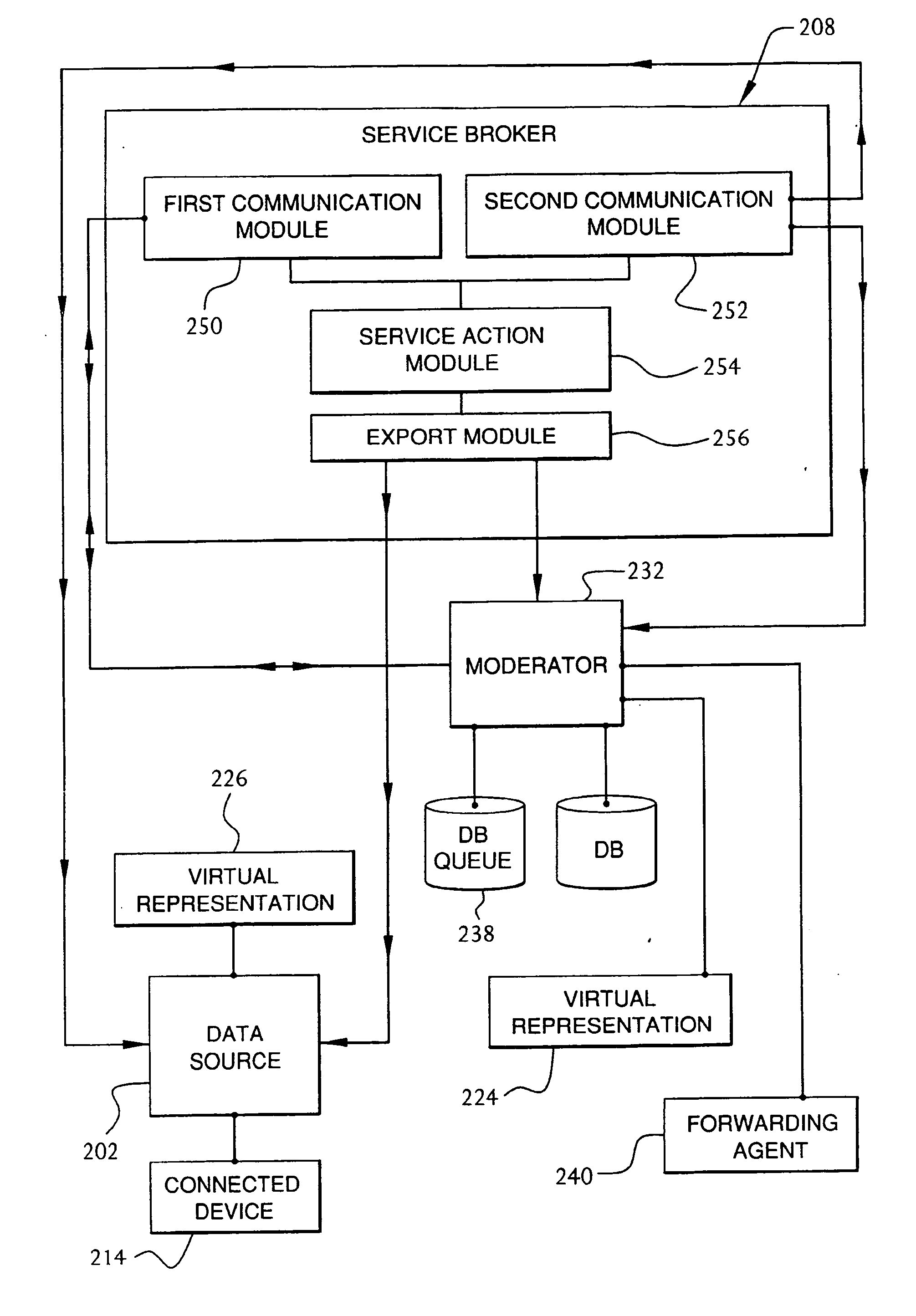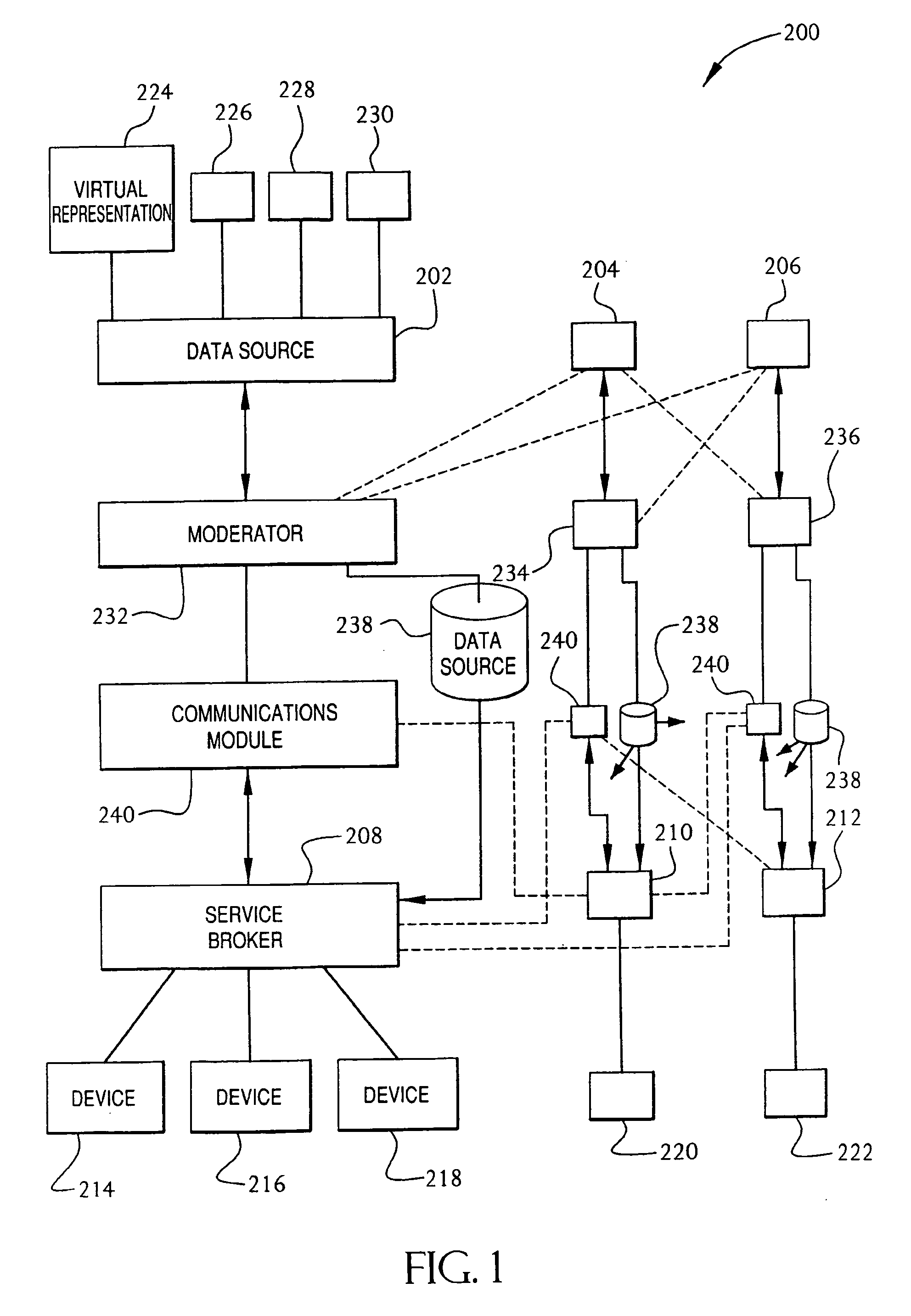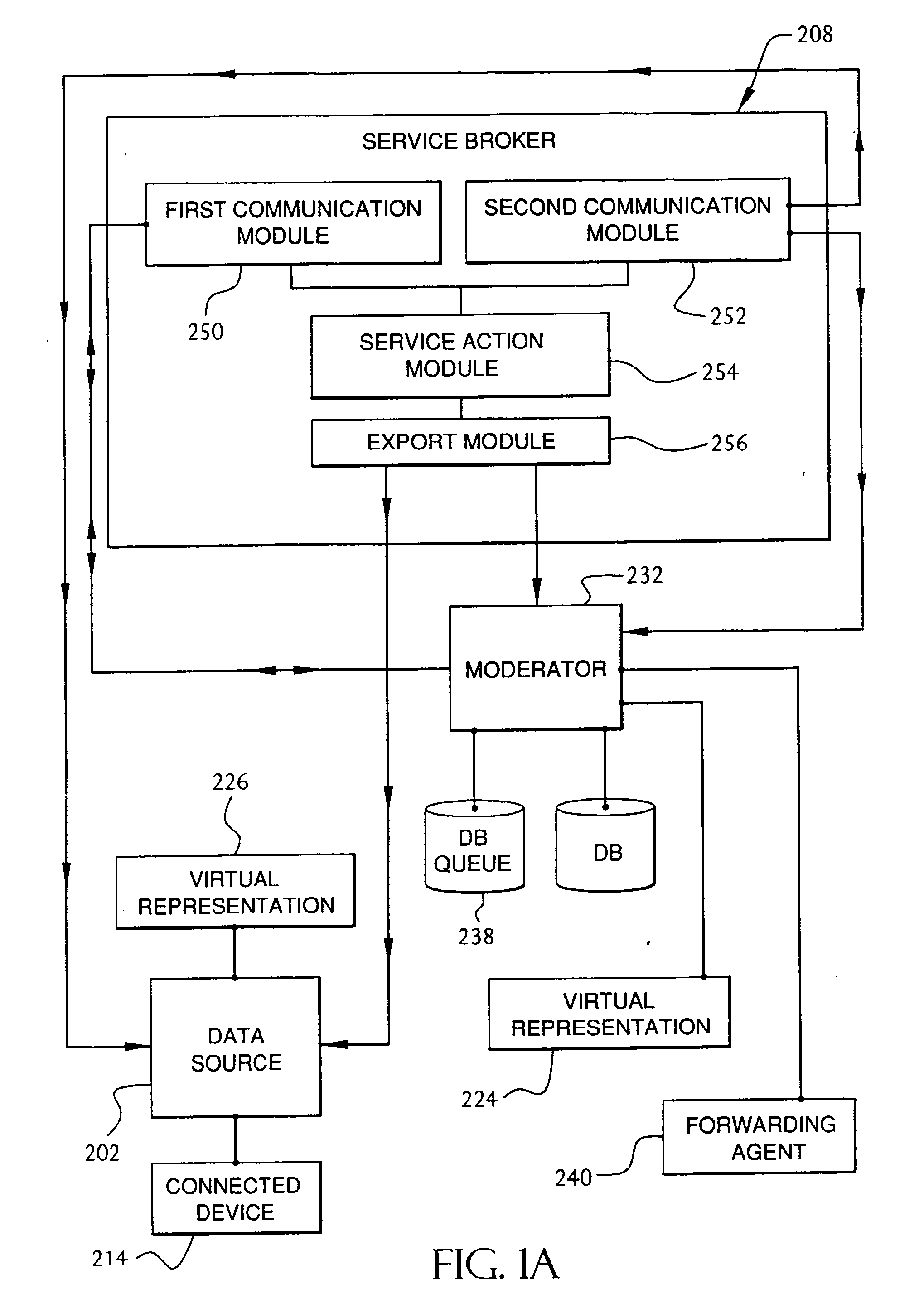Service broker for processing data from a data network
a data network and data broker technology, applied in the field of computer networking, can solve problems such as complex system administration, requiring technical depth, and creating a challenge for the average individual
- Summary
- Abstract
- Description
- Claims
- Application Information
AI Technical Summary
Benefits of technology
Problems solved by technology
Method used
Image
Examples
Embodiment Construction
[0044] In FIG. 1 there is shown a system 200 for transferring data or commands from a data source or command generator to a service broker via a moderator. The moderator allows the service broker to get commands and / or data from the data source without needing the functionality of a server or otherwise some mechanism for listening for the data transmission.
[0045] The system 200 includes a data source or command generator 202 that initiates the transfer of commands and / or data intended for a particular service broker. Additional data sources / command generators 204, 206 may also be provided. The system 200 includes a service broker 208 that receives the data / commands from the data sources / command generators. In addition to service broker 208, the system may also include any number of additional service brokers 210, 212.
[0046] Each service broker may include connected devices 214, 216, 218, 220, 222. In one form of the invention, these connected devices are the ultimate receivers of ...
PUM
 Login to View More
Login to View More Abstract
Description
Claims
Application Information
 Login to View More
Login to View More - R&D
- Intellectual Property
- Life Sciences
- Materials
- Tech Scout
- Unparalleled Data Quality
- Higher Quality Content
- 60% Fewer Hallucinations
Browse by: Latest US Patents, China's latest patents, Technical Efficacy Thesaurus, Application Domain, Technology Topic, Popular Technical Reports.
© 2025 PatSnap. All rights reserved.Legal|Privacy policy|Modern Slavery Act Transparency Statement|Sitemap|About US| Contact US: help@patsnap.com



